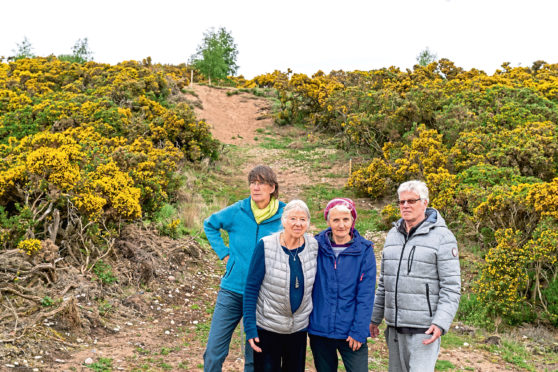A controversial housing project has been approved despite concerns it could “destroy” the natural home of birds and plants.
The proposals split the community at the Findhorn Foundation, with 55 objections lodged with the council amid fears about over-population and traffic.
However, 11 also wrote to back the plans from developer Duneland as they believe the 38 homes, three commercial craft units and community facility are within the ethos of the enclave and would help support its vibrancy.
There was heated debate about the development potentially encroaching too far into the sand dunes in response to other projects by Duneland, with reports of “no more” being scrawled on signs in the area.
The local community council also suggested the Foundation was beginning to “sprawl”.
But yesterday, the authority’s planning committee backed the plans despite impassioned pleas from one member to protect the dunes which were described as of “local ecological importance”.
Forres councillor Claire Feaver said: “There’s nothing in the environmental impact assessment (EIA) statement that says this development will not be detrimental to the conservation status and habitat of species concerned.
“What this EIA statement tells us is how rich this area is – we need to conserve it, not destroy it.
“Coastal dunelands are a very valuable and fragile wildlife habitat, which are under immense pressure all over Britain from commercial and recreational use.”
Concerns were also raised by Mrs Feaver about the effect on yellowhammers and linnets, which are on the “red list” for protected birds and who nest on gorse on the proposed housing site, as well as for lichen moss.
Duneland stressed that it was likely that both species of birds would relocate to neighbouring areas, and stressed measures would be put in place to minimise disruption.
Council planners confirmed the plans conformed with policies and that the site was within the defined settlement boundary of Findhorn.
Principal planning officer Gary Templeton told councillors the land had a “complex” history.
He said: “It was the subject of a local inquiry in 2008. The reporter at that time recommended the housing designation should be deleted, which it was.
“In our most recent local plan the site sits as white land within the settlement boundary as a potential windfall site. These sites make an important contribution to our housing land supply, in 2015 they accounted for 19% of all completions.”
Forres councillor George Alexander backed the application.
He said: “If we don’t build houses in this location we will be building them somewhere else. It’s of concern to me that we will have to build them on agricultural land which produces food.
“I don’t think the fact that we are displacing a tiny number of birds is justification for throwing out this application.”
Speyside Glenlivet councillor Louise Laing added: “I felt a bit uneasy about this application when we were at the site but SNH (Scottish Natural Heritage) aren’t against it – they are the experts we ask about these sorts of things.”
Moray Council’s planning committee approved Duneland’s application for planning permission in principal by seven votes to three. A condition was attached that if any detailed planning permission for the site is submitted then it would also have to be scrutinised by the committee.
